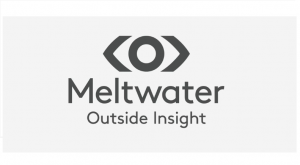 Media monitoring reports often contain a wealth of information that can help companies navigate fast-changing landscape and spot both opportunities and issues on the horizon. Unfortunately, these insights tends to stay buried in the inbox of the PR and communications department and business decision makers lose out on a valuable source of information. So how can communications professionals – both in-house and agency – elevate their insights to the C-Suite to the point that they affect business decisions?
Media monitoring reports often contain a wealth of information that can help companies navigate fast-changing landscape and spot both opportunities and issues on the horizon. Unfortunately, these insights tends to stay buried in the inbox of the PR and communications department and business decision makers lose out on a valuable source of information. So how can communications professionals – both in-house and agency – elevate their insights to the C-Suite to the point that they affect business decisions?
The biggest problem lies in relevancy as executives are often bombarded under an avalanche of requests and reports, from a multitude of sources, and a multitude of agendas. “FYI” is now code for “Safe to Ignore”, and “Urgent” is the new “Regular work”. With this constant amount of background noise, creating a report that stands out in terms of clarity and relevance is essential.
Here are some ways to evolve the way functional groups view and work with communications teams.
Also Read: Three Misconceptions About Public Relations
Understanding what’s important to internal teams
As communication professionals, we understand the impact of the media, and media intelligence in achieving business outcomes. However, this understanding might not be clear for all business functions, and there are plenty of anecdotes about inter-departmental friction because of this.
Instead of trying to educate and convince your colleagues, communications professionals should make the effort to understand not just company business models, but also work processes.
For example, with the expiration of the Production and Innovation Credit (PIC) scheme, the Productivity Solutions Grant (PSG) introduced during Singapore’s Budget 2018 will take its place to provide small and medium-sized enterprises with funding support for off-the-shelf solutions to improve productivity. If your sales team has products that can be funded with governmental grants, changes to grant structures could impact their sales strategy.
Also Read: Is A/B Testing Dead?
Gathering this feedback also helps better define your parameters on your media monitoring platforms, allowing these solutions to pick up content that you know will be more relevant for your internal target audience – which is why a well-constructed media intelligence report will also be critical in making sure the report is read by key stakeholders. It should be constructed in such a way that the most important information is highlighted in a concise manner.
The challenge lies in balancing providing enough information while making the report concise enough for a quick read.
A few questions every communications professional should ask themselves when sharing information to other internal teams:
- Is this relevant information outside of a communications/PR function?
- Is there a “bigger picture” or strategy that can be derived from coverage?
- How does this impact other functions? What kind of actionable insights can be extracted from this coverage?
- Is there any non-media information that should be shared to provide more context? (e.g. Links to relevant blogs, in-depth research papers, new online resources)
- How can intelligence reports also highlight the importance of a communications function?
Also Read: Are Small and Local Businesses Ready for Voice Search?
Reverse Engineering Competitive Strategy
A competition’s major strategic campaign usually creates some ripples in the media, even if they are not explicit about it. A savvy enough communications professional can piece together not just what is being said to the media, but also better understand “behind-the-scene” strategy.
For example, if a competitor has announced a MoU with a major educational institute, and opened an incubator lab, they may be pivoting for a strong push among start-ups. Or if a brand has signed on a celebrity outside of their typical demographic, and released products targeting a niche market, it may signal a larger strategic push in another direction.
Once a potential competitive strategy has been extrapolated, the information could be used by other functions to pivot and gain the competitive advantage.
Also Read: Measure Your Marketing Campaigns Using Link Tracking
Developing Next Steps
To bring intelligence to the next level, it needs to have actionable insights. While most business functions should have an idea of what next steps are, PR and communications professionals can also value-add by including potential next steps – including suggesting possible new lines of inquiry.
The old business adage of “Don’t bring me problems, bring me solutions!” resonates here – and while PR and communications teams are unlikely to have a fully-fledged solution to most problems, the next best thing they can provide is a way forward to helping teams collaborate to come up with a solution.
For example, if a government agency announces a new budget allocation for smart cities, PR and communications teams can provide links to various RFPs that are part of this new allocation. If a competitor announces a new product, PR and communications teams can provide an updated portfolio of the competitor’s products.
Organisations face little issues with data collection. Where they struggle most is in analyzing it, picking out the most important data points and then developing a strategy around it. This is where presenting information in a standard format is key to avoid alternative interpretations of data, encouraging cross-departmental collaboration and streamlining processes to mitigate the risks of duplicating work. Ultimately, aligning each department’s strategy into achieving the organization goal.
While elevating your media monitoring requires extra time and thought, turning data into value-added insights in collaboration with different departments will potentially help your organization make that next critical decision.
Also Read: How to Evoke ‘Analog’ Emotions Using Digital Technology











